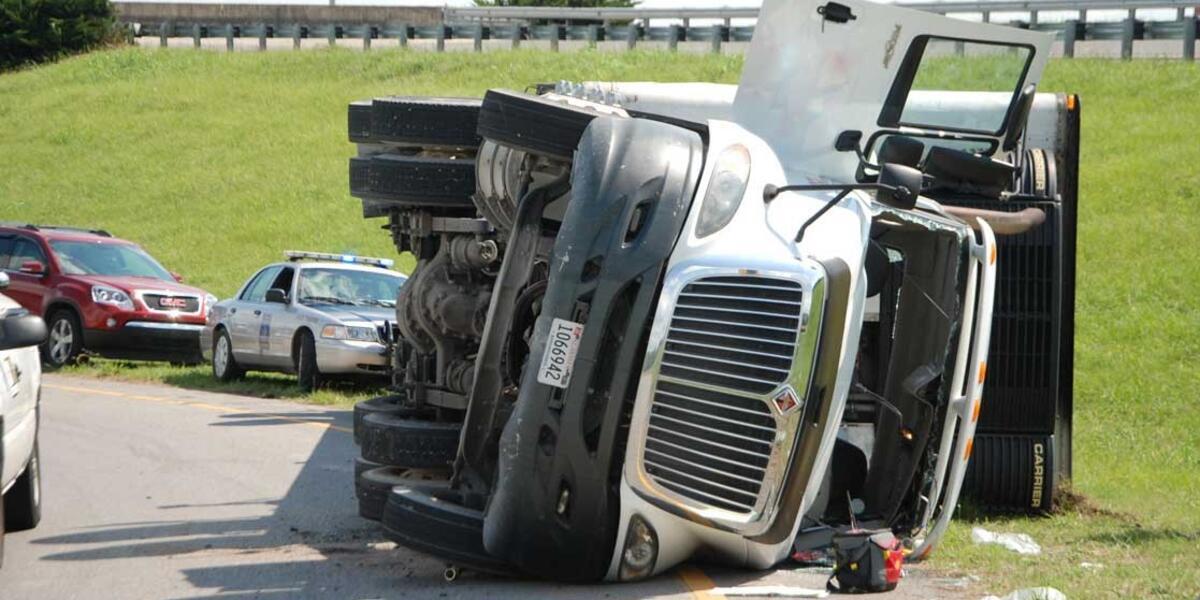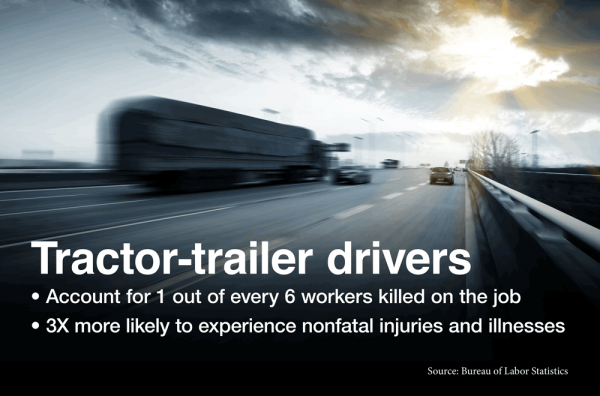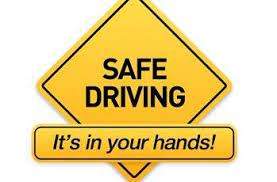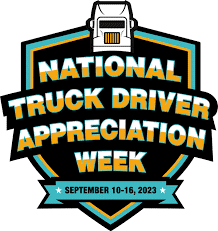When you think of dangerous jobs, what comes to your mind? Police officers, firefighters and construction workers might top the list for most people. Tractor-trailer truck drivers probably don’t come to mind, but Bureau of Labor Statistics data show that driving a truck is risky in ways you might not expect.
For example:
- One out of every seven American workers killed on the job is a tractor-trailer truck driver.
- In 2022, 625 tractor-trailer truck drivers were killed while working.
- Many of these deaths, 78 percent, were caused by transportation incidents.
Heavy and tractor-trailer truck drivers also have the highest number of nonfatal injuries and illnesses that require days off from work across all occupations. They rank 6th among the top occupations with highest incidence rates of nonfatal occupational injuries and illnesses involving days away from work, after police officers and sheriffs, firefighters, highway maintenance workers, correctional officers, and nursing assistants. Another way to look at this statistic is that truck drivers had nearly one out of every 20 injury and illness cases nationwide that needed time off work to recover.
In fact, tractor-trailer truck drivers are three times more likely than the typical American worker to have an injury or illness that required days off from work.
The injuries that are most likely to cause them to miss work result from slips, trips and falls, followed by overexertion. And just how do workers driving tractor-trailer trucks overexert themselves? Pushing and pulling containers; lifting heavy items while loading and unloading the truck; and getting in and out of such a large vehicle routinely are all ways that drivers can easily overdo it on the job.
Among all occupations, tractor-trailer truck drivers also ranked No. 3 on the list of workers suffering from musculoskeletal disorders (injuries or disorders of the muscles, nerves, tendons, joints, cartilage, or spinal discs) that required days off from work in 2014. Overexertion, including repeatedly getting in and out of the truck and assisting with loading and unloading, and prolonged sitting and maintaining the same position (sometimes with poor posture) while driving the truck, are all causes.
And when truck drivers get hurt on the job it takes them longer to recover. Half of all truck drivers required at least 20 days away from work after an incident before returning, compared with all other occupations in which half of all workers returned to work within nine days. Among tractor-trailer truck drivers who had to take days off work due to being injured, 42 percent missed more than a month (31 or more days) of work.
The Transportation Department’s Federal Motor Carrier Safety Administration is charged with reducing the number and the severity of crashes involving large commercial trucks and buses out on our nation’s public highways and roads. In addition to its regulatory oversight of commercial motor carriers, FMCSA has online resources to help everyone share our roadways safely. FMCSA’s safety education program for all vehicles, and including bicyclists and pedestrians, is called “Our Roads, Our Responsibility.”
More information about preventing musculoskeletal disorders in the workplace is available from our Occupational Safety and Health Administration. Data about work-related fatalities, injuries and illnesses can be found on the Bureau of Labor Statistics website.
We hope that this kind of detailed information will help employers improve conditions for tractor-trailer drivers, as well as empower workers with knowledge about the hazards they’re likely to encounter.
If you have questions or need additional information about this data, please contact us.
Sean Smith and Patrick Harris are economists at the Bureau of Labor Statistics. BLS employees Nicole Nestoriak and Erin Huband also contributed to this post.
Have You and Your Employees “Bought” into Safety?
A number of years ago, after a driver safety meeting, a driver approached me and commented that he knew how to drive safely. He stated that he had not had any accidents and knew what to do in case of an accident, so why was I so intent on “selling” safety to him every chance I have? I told him that the most important sale I could ever make would be your life and safety. You may not be in a buying mood today, but later on- tomorrow, next week, next year, it may be too late. By “buying” into safety, your actions may keep others alive as well as yourself!
This is what it will cost you to “buy” into Safety:
-
Two seconds to fasten your seat belt.
-
Ten minutes for a thorough Pre-trip inspection.
-
Ten seconds to make sure your mirrors are properly adjusted.
-
Two seconds to shut off your cell phone before operating a motor vehicle.
-
Eight hours to get proper rest.
-
Thirty seconds to clean the trash from your vehicle at the end of your trip or route.
-
Keep your mind on your driving.
-
A fraction of a second to flip on your turn signal.
-
Two minutes to walk around your entire vehicle while fueling or stopped to make sure it is in safe order.
-
Leave on time and allow extra time for adverse weather conditions.
-
Slow down in poor weather conditions such as fog, rain, snow or ice.
-
Increase your following distance.
-
Expect the unexpected.
National Truck Driver Appreciation Week is September 10-16, 2023
Nearly every aspect of daily life is made possible because a truck driver delivered the goods and resources people need.
National Truck Driver Appreciation Week is an important time for America to pay respect and thank all the professional truck drivers for their hard work and commitment in undertaking one of our economy's most demanding and important jobs. These 3.5 million professional men and women not only deliver our goods safely, securely, and on time, they also keep our highways safe.
Americans and Canadians have taken extraordinary steps to show their appreciation for the important work that professional truck drivers have done. From children passing out lunches, to "I Heart Truck" signs across the highways, the public has taken notice of the essential role truck drivers play in their lives. As we reflect on the past three years, I often wonder where we would be today if the truck drivers had refused to drive the trucks at the onset of the Covid pandemic that were delivering our personal protective equipment (PPE), food, medical supplies and the list goes on and on!
This week in September is a small way to show appreciation to the 3.5 million professional men and women who not only deliver our goods safely, securely, and on time, but also keep our highways safe. Start planning now to do something special for your drivers during this week in September that we set aside to recognize them.










